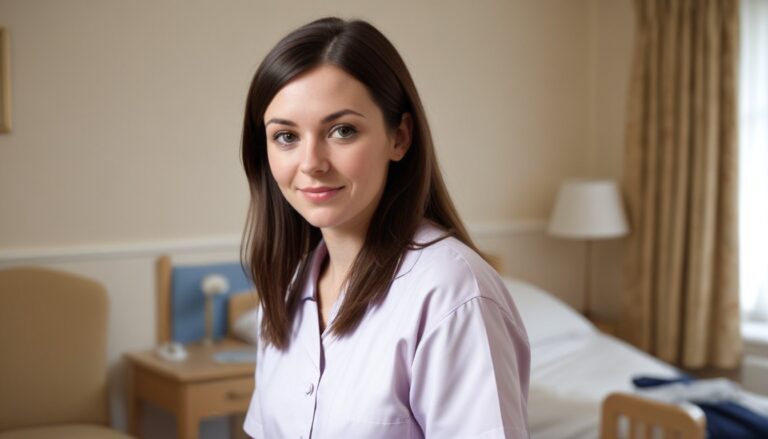Summary
- Definition: Adverse events in health and social care are incidents that cause unintended harm to patients or service users, often being preventable.
- Types: Common adverse events include medical errors (like medication and surgical mistakes), infections acquired in healthcare settings, falls, pressure ulcers, and communication failures.
- Causes: These events can arise from human factors, system failures, poor communication, and unsafe environmental conditions.
- Prevention: Addressing adverse events requires a focus on reporting systems, education, standardised procedures, and fostering a safety culture to improve patient care and outcomes.
Adverse events occur when something goes wrong during the delivery of health or social care services. These events can harm a patient or service user, and they happen unexpectedly. Adverse events can be caused by mistakes, system failures, or unforeseen circumstances. They can range from minor incidents to serious harm or even death.
In health and social care, it is crucial to understand adverse events because they involve the safety and wellbeing of vulnerable people. Addressing these events properly protects individuals and improves care standards.
This guide cover what adverse events are, their causes, types, examples, effects, and how organisations handle them. It outlines different approaches to prevent and learn from these occurrences.
What Is an Adverse Event?
An adverse event is an unintended incident that can result in harm to a person receiving care. Harm can be physical, emotional, or psychological.
These incidents do not always involve wrongdoing or negligence. Some events happen despite careful planning or good practice. For example, someone may have a severe allergic reaction while being treated for another condition, even though staff followed all proper procedures.
The term “adverse event” is used across healthcare and social care systems in Britain. These events are significant because they highlight risks and the need for continuous improvement.
What are the Causes of Adverse Events?
Adverse events can have many causes. Sometimes they involve human error, like giving the wrong medication or forgetting to act on crucial information. Some events are caused by system issues, such as faulty medical equipment, poor communication, or staffing shortages.
Examples of common causes include:
- Mistakes in diagnosis or treatment
- Lack of training or supervision of staff
- Errors in administering medication
- Poor coordination between health and social care services
- Unsafe environments, like hazards in care homes
- Equipment malfunctions or failures
Human errors are often unintentional but may stem from factors like fatigue, stress, or lack of resources. System-based causes usually require organisational changes to address them.
What are the Different Types of Adverse Events?
Adverse events can be divided into different categories based on their nature and impact.
Some of the main types include:
- Clinical Errors – These come from mistakes during treatment or care delivery. Examples include surgical errors, delayed diagnoses, or prescribing wrong medications.
- Falls – Injuries caused by individuals falling in hospitals, care homes, or their own residences.
- Medication Errors – Errors can occur when the wrong dose or type of medication is given. A mistake might also involve missing doses or overlooking allergic reactions.
- Infections – Such events involve illnesses that develop during a hospital stay or care, like MRSA or C. difficile infections.
- Psychological Harm – Psychological harm can occur if someone is treated poorly, ignored, or abused emotionally.
- Equipment Failures – Harm that happens due to faulty machines or tools, such as ventilators or mobility aids.
Staff and organisations should try to act quickly if they identify signs of an adverse event to minimise harm.
Examples of Adverse Events
Examples help to understand how adverse events happen in real-life health and social care settings.
Examples include:
- A patient being given medication they are allergic to because their allergy was not recorded correctly.
- A service user falling in a care home due to poorly maintained flooring.
- A surgical error where the wrong part of the body is operated on.
- Infections spreading in hospitals due to improper cleaning protocols.
- A vulnerable adult being harmed emotionally due to neglect or abusive behaviour by a carer.
Even minor adverse events should be assessed, as small mistakes can lead to larger problems later.
Effects of Adverse Events
Adverse events can have serious effects on individuals and services.
For patients or service users, effects may include:
- Injury or illness requiring further treatment
- Psychological harm, such as anxiety or trauma
- Reduced trust in healthcare or social care services
- Loss of independence or mobility, especially in elderly individuals
For families, effects can include distress, anger, or concerns about loved ones’ safety.
For organisations, effects may include:
- Complaints or lawsuits
- Financial losses due to increased care costs or penalties
- Damage to reputation
- Staff morale issues
Handling adverse events effectively is critical to mitigate these impacts.
How Health and Social Care Organisations Handle Adverse Events
When an adverse event occurs, it’s important to act quickly to protect those affected and prevent further harm.
Organisations follow processes to:
- Identify adverse events early
- Investigate the cause
- Record details to enable learning
- Implement actions to prevent recurrence
Steps often include the following:
Reporting Incidents
Staff are expected to report adverse events to their managers or through specific systems. In hospitals, clinical incidents may be recorded through software like Datix. For social care services, incidents may be logged manually or via online systems.
Investigating Incidents
Organisations start investigations into why and how the event occurred. Investigations look at all contributing factors such as staff errors, environmental conditions, and system failures.
Learning From Events
Lessons are taken from adverse events so systems and processes can be improved. For example, extra training may be provided to staff if an event was caused by poor knowledge. Or new equipment might be introduced for greater safety.
Supporting Affected Persons
Patients or service users impacted by adverse events should receive proper support. This may involve treatments, emotional help, or financial compensation in serious cases.
Preventing Adverse Events
Prevention is the best approach to managing adverse events. Organisations focus on improving processes and training to minimise risks.
Preventative measures include:
- Improving staff training
- Conducting regular risk assessments
- Using safety checks or protocols before treatment
- Keeping environments clean and hazard-free
- Using modern, well-maintained equipment
In social care settings, prevention focuses heavily on creating safe environments and ensuring all staff follow safeguarding practices.
Role of Legislation
Legislation plays an important role in preventing and handling adverse events. Laws provide guidance on safety standards and outline legal responsibilities for care providers.
Key legislation that applies includes:
- The Health and Social Care Act 2008 – Sets standards for care providers.
- The Care Act 2014 – Provides guidelines for safeguarding adults and preventing risks of harm.
- The Data Protection Act 2018 – Ensures sensitive information is handled securely, minimising risks associated with misuse of information.
Regulatory organisations like the Care Quality Commission (CQC) monitor care services and act on shortcomings that could lead to adverse events.
Reporting Adverse Events
Reporting adverse events helps collect data and identify trends. Care standards can improve when people learn which risks are most common and why.
Reporting systems such as Datix or NHS Safety Thermometer make it easier for staff to report incidents. These systems are reviewed regularly to promote transparency.
Encouraging reporting fosters a culture where staff can speak openly about mistakes without fear of punishment. This open environment is better for safety than one where errors are hidden.
Final Thoughts
Adverse events in health and social care are incidents that harm vulnerable people receiving support. They can range from minor mistakes to serious consequences like death, and they have many causes.
Organisations take steps to prevent these incidents by training staff, improving systems, and providing safe environments. When events occur, reporting and investigating are equally important to reduce risks and protect individuals.
Learning from these incidents means better care for the future. Awareness and continuous improvement remain the best ways to tackle adverse events.
Subscribe to Newsletter
Get the latest news and updates from Care Learning and be first to know about our free courses when they launch.







